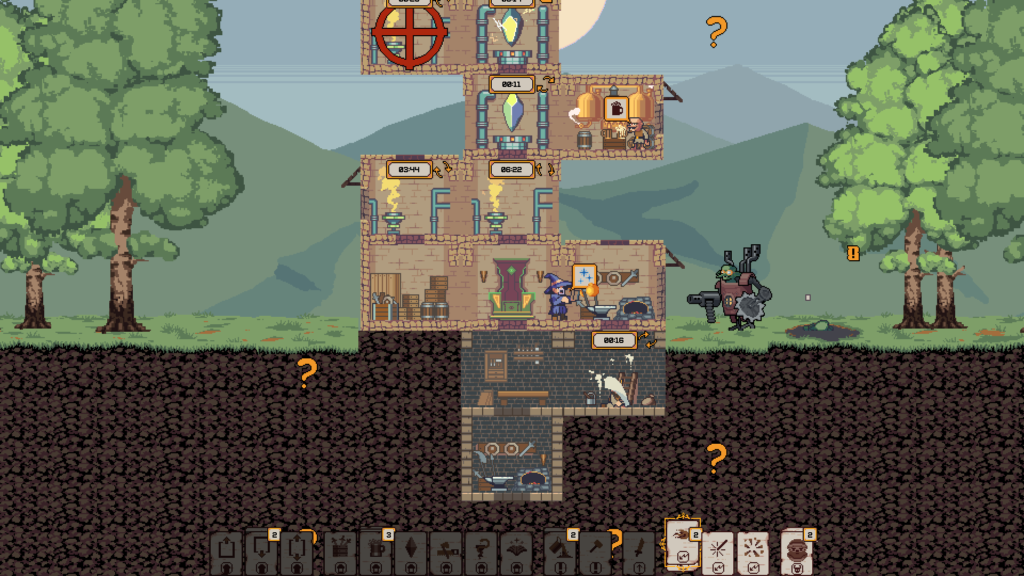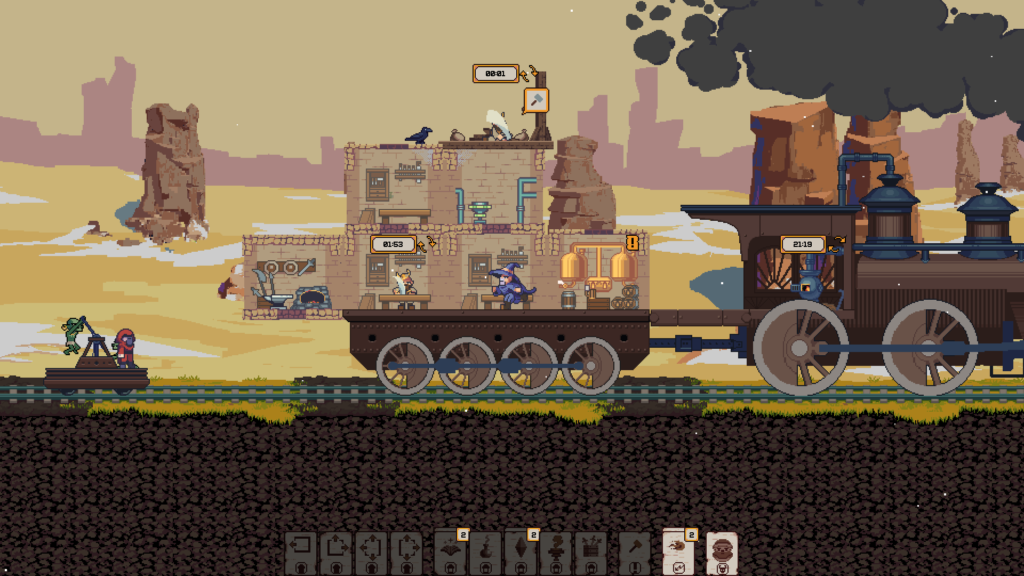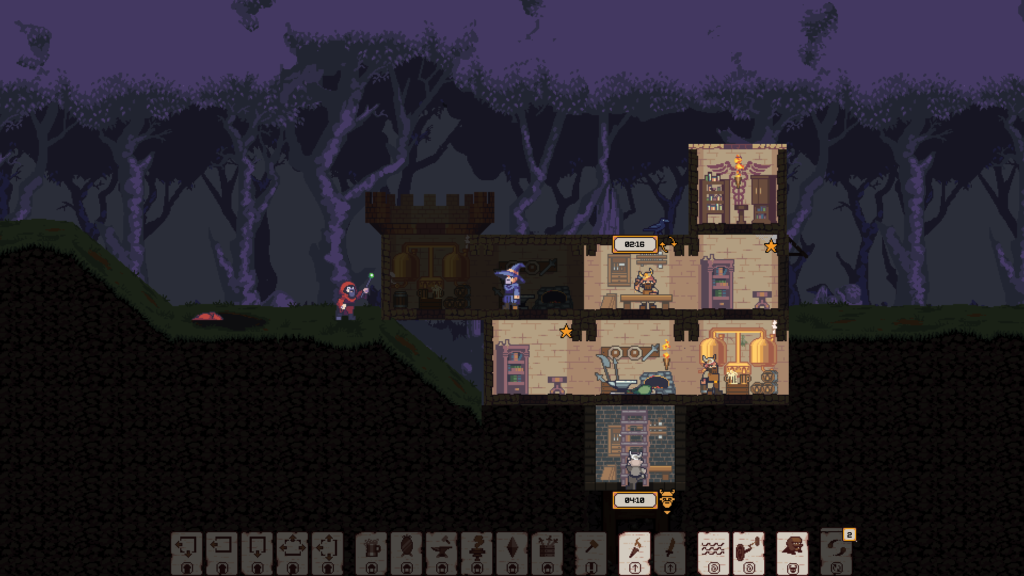Dwarven Skykeep (PC, MacOS)
 Dwarven Skykeep has you hire dwarves to build and defend your tower. However, you can’t choose your options willy-nilly. You may only construct rooms and use abilities offered from cards drawn from your preconstructed deck. Part sim management, part real-time strategy, Dwarven Skykeep will appeal to real-time strategy gamers who like to adapt to changes on the fly.
Dwarven Skykeep has you hire dwarves to build and defend your tower. However, you can’t choose your options willy-nilly. You may only construct rooms and use abilities offered from cards drawn from your preconstructed deck. Part sim management, part real-time strategy, Dwarven Skykeep will appeal to real-time strategy gamers who like to adapt to changes on the fly.
The central mechanic of the game revolves around a player’s deck of cards. Technically, there are several decks – one for building rooms, one for room functions, one for items, one for spells, etc… The game consists of a series of levels strung together by a somewhat tongue-in-cheek campaign of a wizard doing chores for the local dwarven town. Players begin each level with a central room and one dwarf, who can expand the tower by digging out a new room. Rooms come with specific entrances and exits (additional ones can be added with a tool) so players will want to plan out their expansion if they can.

Rooms can be added on any level as well as expand further up or down. Rooms further from the starting room will be more powerful when set up to run. Empty, constructed rooms can then be converted to a specific type. Options include a drinking hall (for more dwarves), library (for more spells), crystal (to power spells), as well as rooms to create weapons and tools.
This is where the central deckbuilding concept kicks in. Everything that is created is drawn from a preconstructed (during the campaign you can occasionally add or subtract cards from your decks) deck of cards. Want to dig out a new room? You have 2 or 3 choices to pick from. Each time you dig one out, you get to draw a new card. Each new room grants you a furnishing card, so you are also limited in which room functions you can build. Want to build a library and don’t have the right card? Tough luck, better dig out some more rooms to draw more cards. This continues on into the use of rooms. Some rooms are a given: one dwarf per beer hall, X amount of mana (based on depth/height of room) per crystal room. However, when using a workshop or forge to build an item or tool, you are given 2 or 3 cards from that deck from which to select. Need a fire extinguisher? Better keep cycling away at those tool cards. Deeper rooms will give a player more cards from which to choose.
Each scenario in the campaign provides new challenges to overcome. Early on, players simply have to build up their tower in specific ways and sizes while repelling invaders and dealing with hazards such as rain that floods rooms with open roofs or fire which disables rooms or even destroys them if left unchecked. In later parts of the campaign, the tower-making thing goes even crazier, having players create their towers on the back of a train or even floating in the sky (Dwarven Skykeep anyone?)

Verdict:
A player’s enjoyment of the game will rely heavily on how well they are adjusted to the vagaries of their deck of cards. Sometimes the cards just don’t fall in your favor. Early thunderstorm? Well, better hope that you pull that tool shed quickly, build it, and then are lucky enough to draw a water pump card in your first couple tries. Invading goblins? You just need to dig a room, fill it with a forge, and then get lucky enough on your item draw to get what you need. This isn’t as bad as it sounds. A prudent building strategy can typically stay ahead of the worst of the surprises but sometimes luck just isn’t your friend. An early scenario involves killing off a goblin but I had to go through it twice before I was able to get to the point where I could make a sword.

Clearly, this was one very specific incident but the general idea persists. The capriciousness of the decks of cards can turn a moderately difficult level into a hard one. Thankfully, they’re short enough so that giving them another round isn’t too much of a price to pay. To help with balance, one can tune up your deck between missions (to emphasize magic, for example) and purchase items that can help mitigate luck (things like starting with a one-use fire extinguisher or water pump for those times where bad things happen faster than you can prepare for them.)
Dwarven Skykeep brings an interesting take on the whole tower-based tower defense game. Real-time strategy fans may find something to like, but only if they’re willing to deal with
random chance playing a role in their short and medium-term strategies.
Kid Factor:
Not much to see here. Any “violence” against or from invaders is rather cartoonish and the dwarves go and drink beer when they’re not doing any other tasks. I think the game is easi;y playable by teens and tweens, but only if they are no prone to rage-quitting if things don’t go their way.





Discussion Area - Leave a Comment